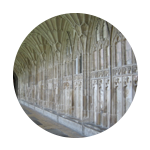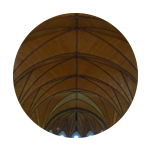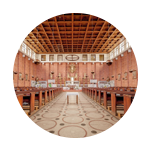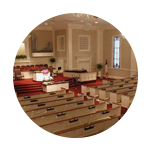PHYSIS® TECHNOLOGY
VISCOUNT HAS CREATED A DREAM INSTRUMENT THAT PROVIDES A THRILLING EXPERIENCE TO EMPOWER TODAY’S ORGANIST
Physis® technology recreates the sound of a pipe organ through computer code. In the same way a physically modeled movie creates an ever changing picture, Physis® creates a three dimensional acoustic image of thousands of pipes simultaneously, and at speeds faster than the human mind can think. Through the use of complex internationally patented algorithms, Physis® calculates, the physics of a flue, reed or bourdon pipe. The result is a living organ, changing in real time, resembling the organ you prefer. A pipe can be looked at as a resonator. Like a flute or clarinet, air is what stimulates the pipe, ultimately producing a sound.

The Linux operating system has been chosen to support this new platform due to its incredible stability and flexibility. Thanks to this system, all Physis® driven devices and digital organs are able to integrate easily with the latest technologies.
THE DIFFERENCE IN SAMPLED AND PHYSICALLY MODELED SOUND.
PHYSIS TECHNOLOGY IN DEPTH: MAKING AND MODIFYING SOUNDS.
VISCOUNT’S FLAGSHIP PHYSIS TECHNOLOGY LINE: UNICO
Tracker Touch
A pipe organ’s stops are not only essential to the design of a pipe organ, but also to the sound and playing experience associated with them. Amazingly, our Physis® technology Tracker Toucher feature is able to replicate the specific resistance a classic organist will expect from their instrument. If you don’t know, as you adjust the stops on an organ, it actually changes the amount of resistance that is required to press the key while playing.
Thus, when using the tracker toucher feature, changing the stops will actually affect the amount of resistance you need on your organ, whether you’ve added ranks to your existing organ or are going fully-digital. That said, if you’d prefer electric action or even the key resistance associated with digital church organs, Physis® can accommodate that too.
Ensemble Effect
Even when air pressure is ‘stable’ as you are playing a pipe organ, there are still micro sized tuning changes happening in real time that give a real windblown pipe organ its unique and ever changing sound. Viscount’s Physis® Technology does this, in addition to your windchest configurations.
Thanks to the powerful processors, the sound of Viscount’s digital organs created not through the common “sample” (digital recording), but instead by reconstructing the sound IN REAL TIME, through sophisticated algorithms. This process reproduces all the natural aspects of the sound right down to the smallest imperfections and irregularities. This is vitally important to give the sound its character, expression and warmth.
Variable Windchest Configuration and Air Pressure
Your windchest legitimately makes all the difference to how your pipe organ sounds. The number and size of windchests you have affects the sound of and air pressure available to the instrument in a variety of ways, from affecting it’s overall tone to how your instrument sustains notes. This is because the windchests provide the air needed to create sound, so as the wind chests empty, it affects the amount of air moving through the pipes, and thus the tone.
When you’re using an instrument equipped with Physis®, the nuanced changes to notes being played are never randomly generated or predicted by the algorithm. Instead, they’re specifically generated as you play based on the number and size of the windchests it’s been programmed to have.
Variable Attack based on real time computation
Attack is another important landmark of the pipe organ’s overall sound. The attack is essentially how the note comes in whenever it’s pressed by the musician. And in the pipe organ’s case, as you continually hit a note, the attack will vary slightly each time, again due to the instrument’s wind-powered anatomy.
Again, where other simulated pipe organs may advertise “varied attack” theirs is simply a randomized selection of samples they have on hand. With Physis®, the variable attack feature is interacting with artist input, the build of the organ in the program, and the other components that affect the instrument’s tone and tuning. While it may seem like a minor detail, it’s important for staying authentic and keeping the true nature of the pipe organ’s sound intact

Stone

Wood

Brick

Plaster
Room Modeling
With Viscount’s Physis® Technology, you can do much more on your digital organ than just add reverb. Reverb can often times alter the sound of other digital organs so much, that it’s no longer believable in that space. With Physis® Room Modeling, the reverb is not an added effect. It is built into the code of the voice. This way the pipes know how to interact with one another in the same way they would in the environment you choose. For example, sound bounces off of wood very differently than it does off stone. Viscount’s Physis® Technology takes this into consideration. The humidity of a room is also a major determining factor in how the sound of the pipes interact with each other. Since Viscount’s room modeling for our digital organs isn’t just an effect, you can even tell Physis® to act as if the humidity in the room is low, medium, or high. This gives you the flexibility to create the acoustical environment with an incredible amount of flexibility. Now that you’ve had a chance to learn more about the technical aspects of Viscount’s Physis® Technology for our digital organs, you can finally pay attention to the most important aspect…the sound.
